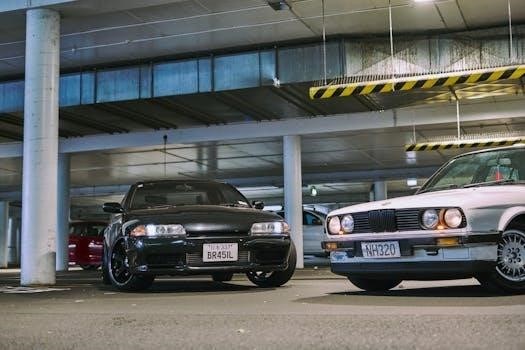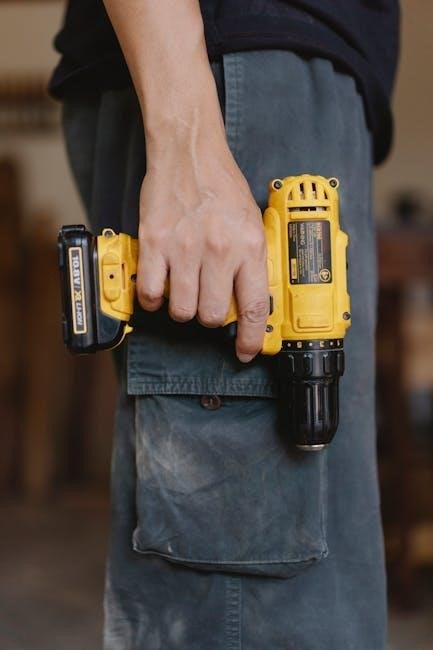Can a Manual Car Have a Remote Start?
Yes, it is possible to install a remote start system in a manual transmission vehicle. Modern systems, like Compustar, prioritize safety and convenience for various vehicle types including those with stick shifts. These systems have advanced features to ensure secure operation.
Remote Start Feasibility for Manual Transmissions
While traditionally, remote starts were more common in automatic vehicles, advancements in technology have made them feasible for manual transmissions as well. The primary challenge lies in ensuring the vehicle’s safety during a remote start, since manual cars require the clutch to be disengaged and the car to be in neutral. Modern remote start systems designed for manual vehicles tackle this challenge using sophisticated safety mechanisms. These systems often incorporate features like a reservation mode, which verifies that the car is in a safe state before allowing the remote start to engage. This mode is critical as it ensures that the vehicle is parked, with the parking brake engaged and the gear shift lever in neutral, thus preventing unexpected movement when the engine starts. The feasibility also depends on the specific system used and its compatibility with the vehicle’s make and model. Reputable brands like Compustar have developed solutions specifically designed for stick shift vehicles, providing a safe and reliable remote start experience. The proper installation is key to ensure these systems work safely.

Reservation Mode in Manual Remote Start Systems
Reservation mode is a critical safety feature in remote start systems designed for manual transmission vehicles. It serves as a confirmation process that ensures the car is in a state safe for remote starting. Activating this mode typically involves a specific sequence of actions by the driver, such as engaging the parking brake and putting the car in neutral. Once the reservation mode is set, the system “remembers” this state and will allow a remote start. It is essential because manual cars can be left in gear, which could cause the car to move unexpectedly if started remotely. The system will only allow the car to remote start if this condition is met. This mode is a proactive safety measure that helps to prevent accidents. The system will not enable remote starting if the vehicle is not in a safe state, thereby preventing potential damage or injury. The reservation mode is therefore a foundational component of a safe manual remote start system. It ensures that the vehicle is prepared for remote starting.
Safety Features in Manual Remote Start Systems
Manual remote start systems are equipped with several safety features designed to mitigate the risks associated with remotely starting a manual car. Key takeover, which prevents theft if a break-in occurs during remote start, is a crucial aspect. These systems typically include a neutral safety switch, which ensures the vehicle is in neutral before starting. Another feature is the parking brake engagement requirement, which mandates that the parking brake is fully engaged for remote start to be possible. These safety measures are essential because manual cars can be left in gear. The features are designed to prevent uncontrolled vehicle movement. Some systems also have clutch interlocks, which are designed to prevent accidental starting when the clutch is engaged. These various features work in tandem to provide comprehensive protection. They significantly reduce the possibility of accidents. With all of these safety measures, modern remote start systems are safe for manual cars.
Clutch Interlock and its Bypass in Remote Start
The clutch interlock is a crucial safety feature present in manual transmission vehicles. Its primary function is to prevent the engine from starting if the clutch pedal is not fully depressed. This safety mechanism prevents accidental starts when the car is in gear. It also prevents uncontrolled movement. When a remote start system is installed, this interlock must be bypassed in a controlled manner. This bypass is necessary for the remote start to function effectively. Remote starters are designed to temporarily override the clutch interlock. This ensures the car will not start unless specific safety measures are met. The bypass must be done carefully to maintain the safety features. Improper bypass can lead to dangerous situations. The goal of the bypass is to allow the car to start remotely. This will only happen when the car is in neutral and the parking brake is engaged. The controlled bypass of the clutch interlock is an important part of safe remote start operation. It is a critical aspect of installing remote start systems in manual vehicles.
Neutral Safety Switch and Parking Brake Engagement
For remote start systems in manual vehicles, the neutral safety switch and parking brake engagement are vital for safe operation. The neutral safety switch is designed to prevent the vehicle from starting if it is not in neutral. This switch is a critical component that works alongside the remote start system. It ensures that the vehicle will not lurch forward upon remote start activation. This switch is usually wired to the remote start controller. The system checks the switch to confirm neutral before attempting to start. Furthermore, the parking brake engagement is another essential safety measure. The remote start system requires the parking brake to be fully engaged before the engine can be started remotely. This prevents the car from moving unintentionally. This prevents any potential rollaway situations. This function of the remote start is important when the car is parked on a slope. These safety measures work together to ensure safe remote start operation. The parking brake and neutral safety switch are crucial for preventing accidents. They are fundamental to the remote start system’s operation. This approach ensures the car only starts when it is safe to do so.
Risks Associated with Manual Remote Start
Remote starting a manual transmission vehicle does present several risks if not properly implemented and used. One primary concern is the potential for unintended movement. If the vehicle is left in gear and the remote start is activated, the car could lurch forward unexpectedly, posing a danger to people and property. This situation is especially dangerous if the parking brake is not fully engaged. Another risk involves the clutch interlock. If the system malfunctions or fails to disable the interlock properly, the vehicle could attempt to start while in gear. This could lead to premature wear on the clutch system. It can also cause vehicle damage. Furthermore, there are risks if the neutral safety switch is bypassed incorrectly. This can increase the likelihood of the vehicle moving unexpectedly. Incomplete clutch engagement can also lead to problems. This can compromise vehicle performance and safety. The risks highlight the need for careful consideration and proper installation. It shows the importance of safety features. All of these risks make it necessary for users to be diligent.
Importance of Professional Installation
When considering a remote start system for a manual transmission vehicle, professional installation is crucial due to the complexity of these systems. The intricate nature of integrating a remote start into a manual car requires expertise. It is necessary to ensure that all safety features are correctly wired and functioning properly. Improper installation can lead to malfunctions. This can also result in dangerous situations. Qualified installers possess the necessary knowledge. They also have the tools to handle the unique challenges presented by manual transmissions. They will ensure the clutch interlock is bypassed correctly. They can properly wire the neutral safety switch. They will also ensure that the parking brake engagement is integrated properly. A professional installation minimizes the risk of system failures. It also reduces the chances of unintended vehicle movement. Furthermore, professionals can provide guidance on the correct usage of the remote start system. They will also address any safety precautions. They can also ensure proper functionality. This is essential for the safe and reliable operation of the remote start. DIY installations may seem like a cost-effective option. However, they often carry the risk of errors. These errors can have serious safety and functional implications.

Legal Considerations for Remote Start Use
Before using a remote starter on a manual transmission car, it is important to research and understand the local laws and regulations. Some jurisdictions may have specific rules regarding the use of remote start systems. These laws often focus on safety and environmental concerns. It is essential to ensure that your remote start system complies with all applicable regulations. This includes requirements related to vehicle idling and noise levels. Some areas have limitations on how long a vehicle can idle. They may also have restrictions on the time of day when remote starts can be used. Failing to adhere to these laws can result in fines or other penalties. Additionally, certain regulations may dictate the conditions under which a remote start can be legally operated. For instance, there might be rules about parking on public roads versus private property while using remote start. It’s also wise to check for any specific guidelines on the modification of vehicle systems, as remote start installations can sometimes be viewed as such. Understanding these legal aspects will help ensure that you use your remote start system responsibly and within the boundaries of the law.
User Precautions for Safe Remote Start
When utilizing a remote start system on a manual transmission vehicle, it is crucial to adhere to several safety precautions to prevent accidents and ensure proper functionality. Always confirm that the vehicle is parked on a flat, level surface to avoid any unintended movement after remote starting. Before activating the remote start, double-check that the parking brake is fully and securely engaged. This is a critical step, especially for manual cars, as it prevents the vehicle from rolling away. Make it a habit to always leave your manual transmission vehicle in neutral before exiting, and before using the remote start. This practice eliminates the risk of the car lurching forward or backward upon ignition. Never leave children unattended in or near a vehicle with a remote start enabled. They could accidentally engage the system, potentially leading to dangerous situations. Furthermore, be mindful of your surroundings when using the remote start. Ensure that no people, pets, or obstacles are in the path of the vehicle. By following these precautions diligently, users can enjoy the convenience of remote start while maintaining a high level of safety.
Compustar as a Safe Remote Start Solution
Compustar remote start systems are widely recognized for their safety and reliability, particularly when installed in manual transmission vehicles. These systems are designed with advanced safety features that are crucial for preventing accidents. Compustar utilizes sophisticated control modules, such as the CM7 series, that are specifically engineered to work with manual transmissions. These modules incorporate additional safety measures which is the reason why Compustar can be safely added to virtually any manual-transmission car. The key takeover feature further enhances security by protecting the vehicle from theft during remote start. Compustar systems are designed to prevent the vehicle from starting if it’s not in neutral and the parking brake is not engaged. They are also built to ensure that the clutch interlock is disengaged. This is of particular importance when using remote starters on a manual car. This prevents the vehicle from moving unintentionally. By choosing Compustar, users can have peace of mind knowing that their remote start system is designed with their safety in mind. Compustar’s commitment to safety makes it a trusted choice for manual transmission vehicle owners.

Aftermarket Remote Starter Requirements
When considering an aftermarket remote start system for a manual transmission vehicle, several critical requirements must be met to ensure safe and reliable operation. Most aftermarket systems necessitate a connection to the neutral safety switch. This connection is vital as the system checks for a ground signal before allowing the vehicle to start remotely. This switch confirms the car is in neutral, preventing accidental movement. Additionally, the parking brake must be engaged. This is another mandatory condition for a safe remote start. The system is designed to be inoperable if the parking brake is not fully engaged. The clutch interlock must be addressed. Most aftermarket systems are designed to deactivate this interlock. This interlock normally prevents the car from starting while in gear. A bypass of this interlock is essential for remote start functionality. These requirements are not mere recommendations. They are crucial safety measures. They are designed to prevent the car from starting while in gear. These requirements provide a safe and reliable remote start system in manual cars.

Manufacturer Recommendations and Limitations
Generally, vehicle manufacturers do not install remote start systems on manual transmission cars. This is primarily due to the inherent safety risks associated with manual vehicles. Manufacturers often advise against the aftermarket installation of remote start systems. These concerns revolve around the potential for accidental starts if the car is left in gear. The lack of a factory-installed system means there are no manufacturer-backed safety features. This increases the risk of misuse or malfunction. The manufacturers also highlight the importance of using a professional installer. This is due to the complex electrical systems involved. Improper installation can lead to vehicle damage or safety hazards. Furthermore, there may be warranty implications. Modifications with aftermarket systems may void certain parts of the vehicle’s warranty. The limitations often include the inability to fully integrate with the existing vehicle systems. This lack of integration can lead to unpredictable behavior. The manufacturers stress the importance of adhering to their safety guidelines. They recommend against any modifications that compromise vehicle safety. It is vital to consider these recommendations before installing an aftermarket system.

























